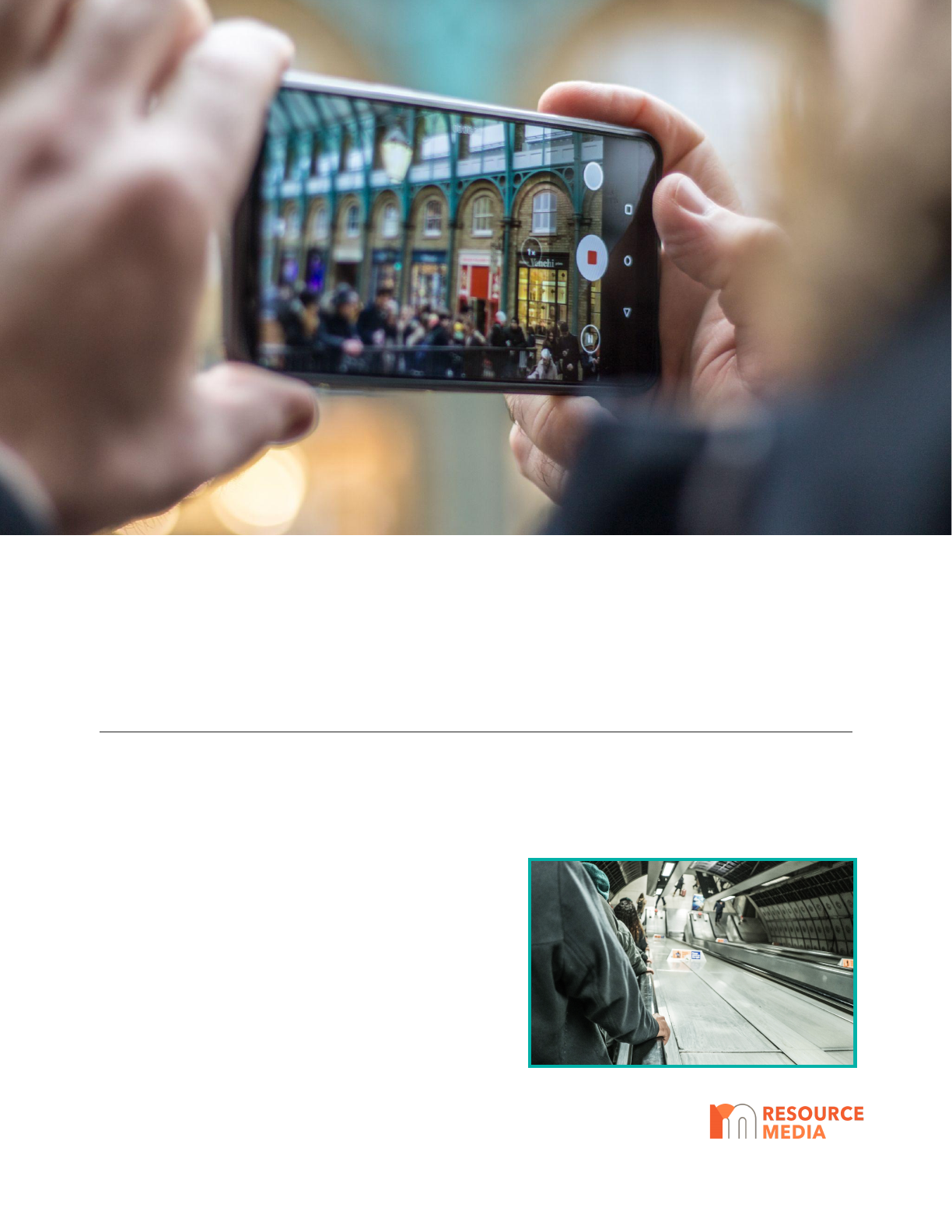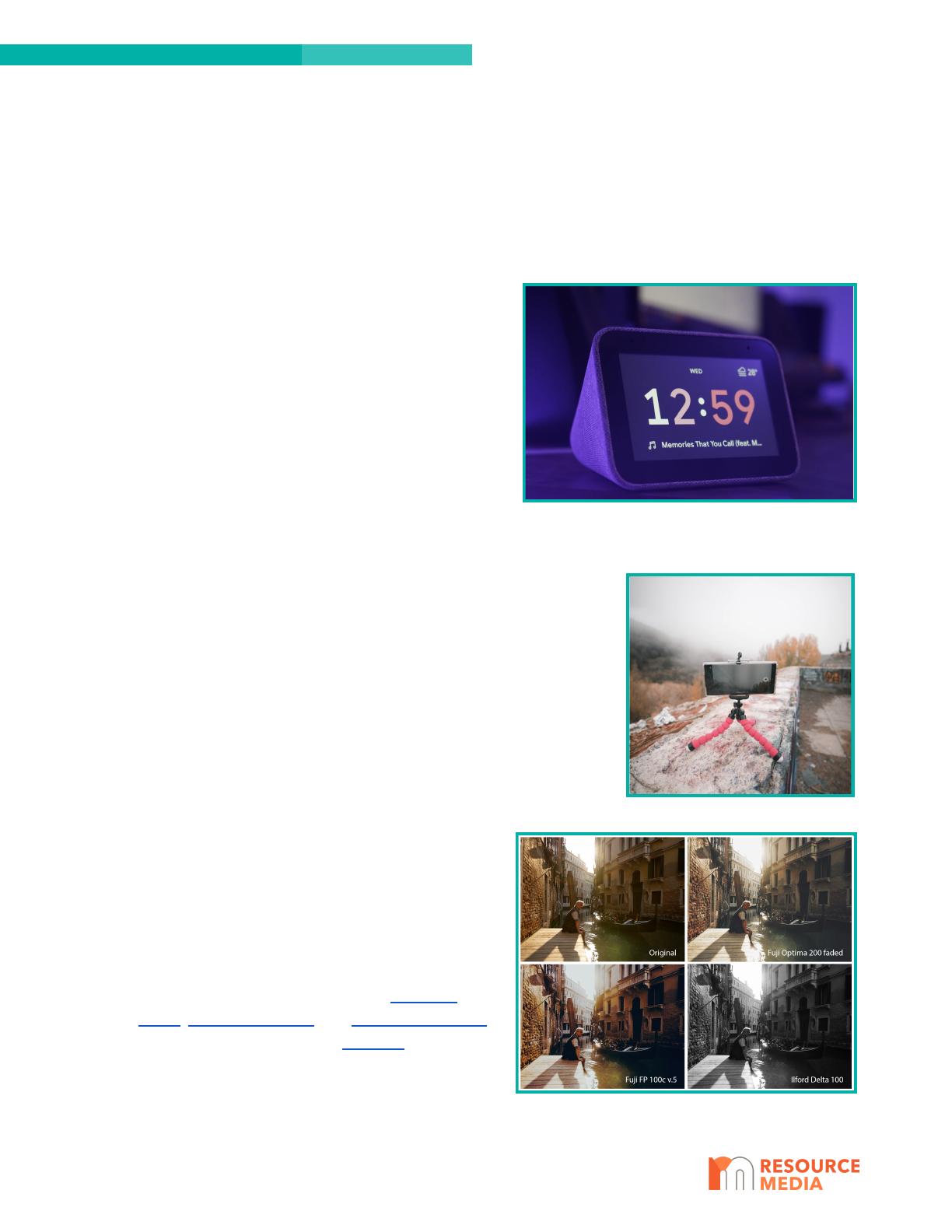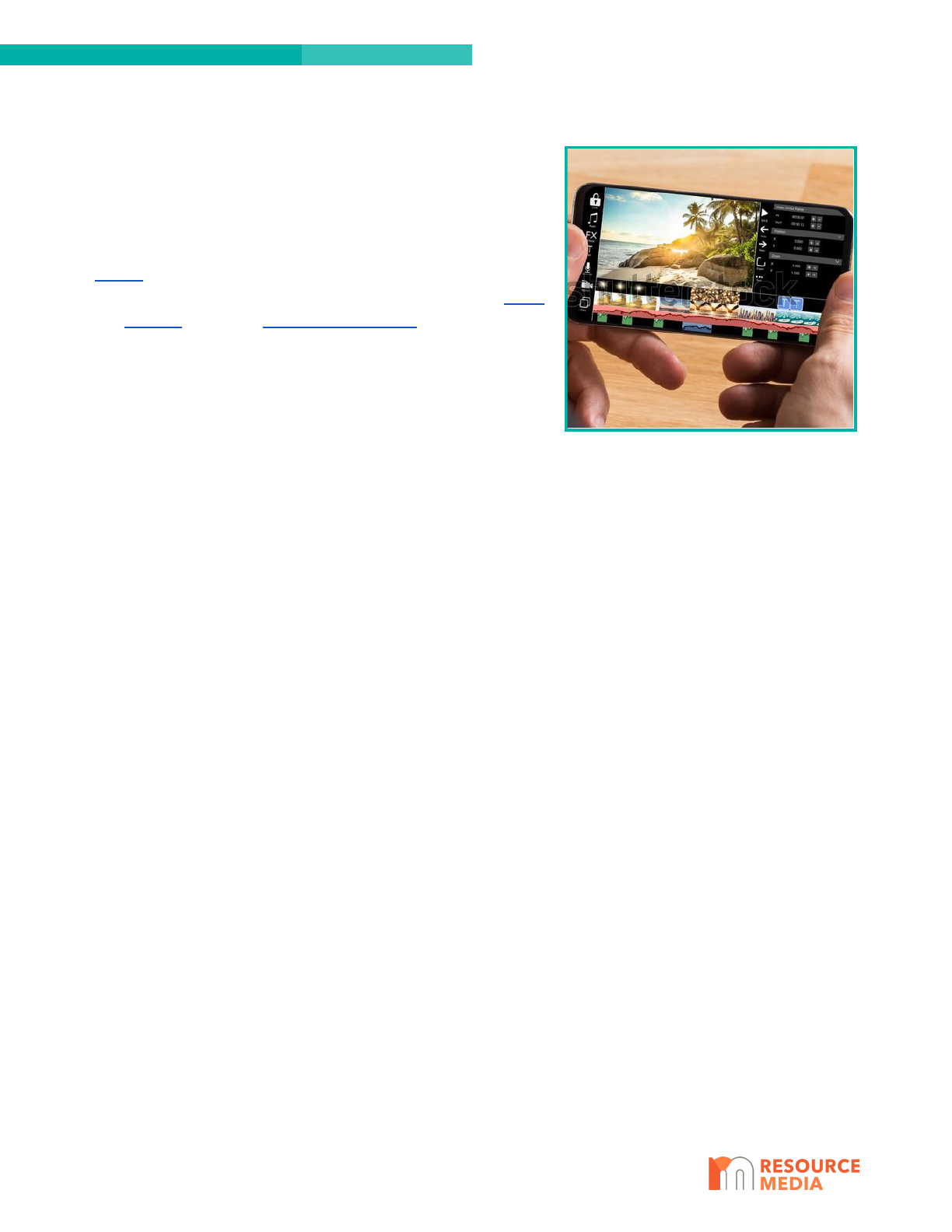
DIY visual storytelling
Using your phone to capture powerful images, audio, and video
TIPSHEET / 2021
When voice recordings and images come together, they can help tell a strong audio and visual story. To tell
and show your story, there’s no need for fancy, expensive equipment — a smartphone is more than capable
of taking professional photos and recording clear audio.
Below, we share best practices on how to take and edit
creative photos and record clean audio.
Tips for capturing photos
TIP 1 - Vertical or horizontal?
There’s no one way to take a photo, so play around and
experiment with the style of each one. Figure out what the
CONTACT
Alysha Ferguson and Marcela Gara Garcia-Huidobro
www.resource-media.org
2

subject or focus of your photo is — landscape (horizontal) is best for shooting a location or space by
including more in your shot, while portrait (vertical) is useful for taking pictures of people or things that you
want to be more focused on.
Experiment with your angles as well and avoid taking every photo straight-on. Taking a photo from below,
above, or even from behind can make a drastic yet artistic change.
TIP 2 - Consider lighting
When you go to take a photo, be mindful of lighting. If
outside, avoid taking your photos in the middle of the day
when the sun shines its brightest. While inside, make sure
there’s enough light to avoid any dark shadows —
windows for capturing can make for ideal natural lighting
sources.
Feel free to use lighting in your style if it helps tell your
story better; for example, if you wake up early in the
morning and the first thing you see is the dim light of a
digital alarm clock, then capture that image by taking a photo of the clock in less light to show exactly how
you see it each day.
TIP 3 - Steady your camera
Stabilizing your camera phone can help ensure your images come out
clear with little to no shake. Try placing your camera on the back of a
seat, on a table or even use your hands to help steady the camera.
Investing in a simple, inexpensive tripod can also help avoid movement in
your images especially when you’re on the go.
If you’re shooting in public spaces, be mindful of who is in your shot, and
if you’re unsure, always ask people for permission especially if there are
children within the image frame.
TIP 4 - Editing your photos
After you’ve taken your photo, you can edit it directly on
your phone to make it just the way you want. Androids
and iPhones give you editing tools directly on your phone.
For more editing abilities, some free editing apps available
to download directly onto your phone are RNI Films (Apple
only), VSCO, Adobe Lightroom, and Photoshop Express.
And if you feel overwhelmed at all, YouTube videos are a
great resource for how to make the most out of each app.
3 April 2021

Tips for recording audio
TIP 1 - Create the ideal environment
When it’s time to record yourself, you’ll want to find a quiet place with the least amount of background
noise. Avoid being near any appliances or windows that would allow outside noise to be heard.
Closets and bathrooms are always good options. Once you find a place, surround yourself with pillows to
help act as soundproofing or throw a blanket over yourself to help block out any unwanted noises.
TIP 2 - Capture a clear recording
For recording equipment, your phone will work just
fine: iPhones have the Voice Memos app, while
Androids have Voice Recorder. If you’d like to
download a new app for recording, Rev and Voice
Recorder & Audio Editor (Apple and Android) are
free and easy to use and share. Simply hold your
phone a few inches away from your mouth and hit
the “record” button.
If you want to take it one step further to create
better sound, use an external microphone or a pair of
headphones with a microphone — and simply hold
the microphone a few inches from your mouth like
you would your phone and hit record.
TIP 3 - Incorporate ambient sounds
While it’s important to record your interviews in a quiet setting, it’s also key to record ambient or
environmental sounds. If your story is about your daily commute, think about recording the sounds you hear
on the subway platform, people on the street, sounds of doors opening, etc. These added sounds help your
audience feel like they're right there with you as you describe the location of the story. It’s also important to
note that whenever you’re recording with your phone, be sure to turn on airplane mode on your phone so as
not to be interrupted by a notification or an incoming call.
TIP 4 - Stay mindful, and do test recordings
Be mindful of keeping your mouth directed at your phone or microphone — make sure you’re not turning
your head while speaking or you will become quieter at some portions of your recording. Do some test
recordings to see how loud or soft you’re speaking and adjust accordingly.
4 April 2021

Tips for editing videos from your phone
TIP 1 - Use an editing app
There are a handful of video editing apps available for your
phone, so it’s up to you which one you prefer. For Apple users,
iMovie is an easy to use tool that should already be downloaded
onto your iPhone. The app FilmoraGo is available for both Apple
and Android users, as is Adobe Premiere Rush.
Each of the above apps also have desktop versions for your
laptop or computer if you would prefer to edit or preview your
video on a larger screen.
TIP 2 - Assess your timing
Video clips seem to run at their own speed, so watch out for the timing of your video. A clip might seem
short by itself, but it could be too long when watched with the rest of your video. Keep track of the timing,
and adjust accordingly.
TIP 3 - Use a test audience
Ask a friend or family member to watch your in-progress video to make sure your video and overall creative
vision makes sense and is easy to follow. Test out adding music and text on screen as they can help move
your story along, provide context, and keep your audience engaged till the end.
TIP 4 - Save time to export
Exporting and sending a finished video can take time depending on how long or complex it is, so be mindful
of time when you’re near that finish line. Give yourself enough time, and be patient!
And lastly, enjoy the experience! Storytelling is about so many things — healing, joy, advocacy,
connection — but most importantly, it’s about growth, for yourself and your audience.
5 April 2021
